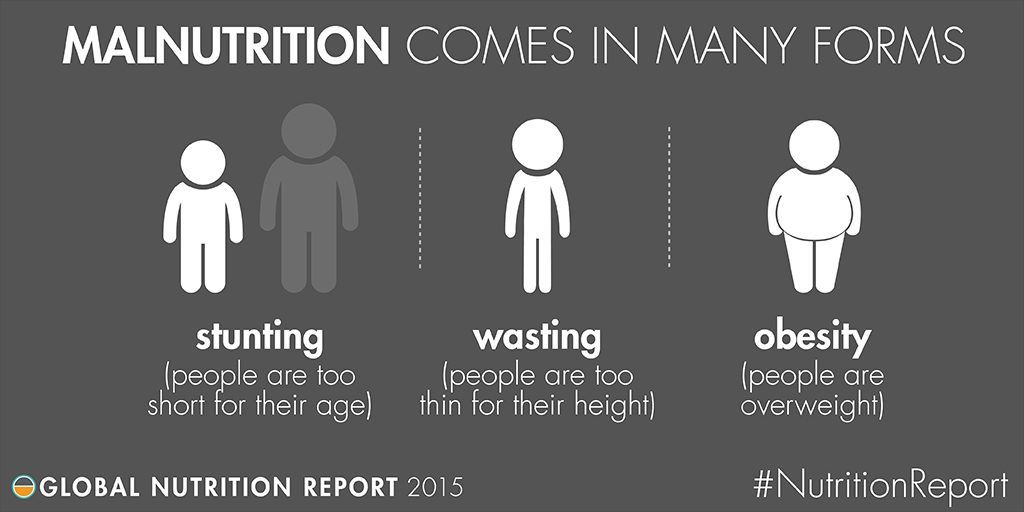Key challenges for reinforcing food and nutrition security
The international research and practice communities working at the interface of agriculture, nutrition and health convened this summer at the Agriculture Nutrition & Health Academy (sponsored by IMMANA and DFID) and during the Feed-the-Future Innovation Lab (sponsored by USAID) in Kathmandu, Nepal. It was a real honour and rich learning experience to attend this highly interdisciplinary event, where young researchers could meet more experienced staff from a wide range of disciplines (human nutrition, public health, crop & soil sciences, food technology, rural sociology and agricultural economics) and different professional backgrounds (academia, public policy, NGOs, funding agencies). I derived 5 key findings from the very lively discussions on the opportunities and constraints for reinforcing food and nutrition security, that I would like to share with you.
#1 The importance of keeping malnutrition high on the political agenda
First, I learned about the importance of keeping malnutrition very high on the political agenda. Despite the promising reduction of chronic poverty in many parts of the world, there are still 800 million people affected by chronic undernourishment, 159 million children under 5 are too short for their age (stunting) and 50 million children under 5 do not weigh enough for their height (wasting), about 2 billion people face critical micro-nutrient deficiencies (zinc, iron, iodine) that affect their psychical and brain development, and 2.1 billion of people are already suffering from overweight and obesity.  This triple burden of malnutrition is thus affecting a growing number of people in the developing world and lead to a substantial change in the burden of diseases (less infection diseases, but very fast growth of non-communicable diseases related to diets, like diabetes and high blood pressure). This will impose an enormous economic burden on future healthcare system that can be better addressed through investments in improved food systems. IFPRI figures indicate that a US$ 1 investment in better food supply leads to saving of US$ 16 in healthcare costs.
This triple burden of malnutrition is thus affecting a growing number of people in the developing world and lead to a substantial change in the burden of diseases (less infection diseases, but very fast growth of non-communicable diseases related to diets, like diabetes and high blood pressure). This will impose an enormous economic burden on future healthcare system that can be better addressed through investments in improved food systems. IFPRI figures indicate that a US$ 1 investment in better food supply leads to saving of US$ 16 in healthcare costs.
#2 Confusion about the dynamics of food systems
Second, there is still an enormous confusion about the dynamics of food systems. Some agencies, like the UN Food and Agricultural Organization (FAO) tend to limit the analysis to farming systems and their linkages with agri-food value chain. Others, like the Global Panel on Agriculture and Nutrition (GLOPAN) forward a more comprehensive approach that looks at different drivers for improving rural and urban diets. The latter framework also includes the food environment (i.e. markets and policies) and also looks at factors that influence human settlement conditions (particularly clean drinking water and sanitation). Different understanding of the drivers of food system change may severely hinder the identification of a core set of policies that enable to reach progress in solving malnutrition challenges. Therefore, it is of critical importance that the boundaries of food systems analysis are further stretched, enabling that due attention is to nutrition-population linkages (including reproductive health) and broadening attention for consumer behaviour.
#3 Dietary transition goes very fast
 Third, it is overwhelmingly clear that the dietary transition goes very fast. The rhythm of urbanization in African and Asian countries is increasing rapidly. By 2030 cities of Asia will incorporate around 1,3 billion people, with Dhaka in Bangladesh likely to become the world’s fifth largest city with 22 million inhabitants. In Africa, in 2030 close to 50% of people will live in metropolitan areas, with Dakar, Kinshasa, Accra, Kampala and Addis Ababa as major growth poles. This is accompanied by an equally rapid transition in shopping patterns and diets, reducing the reliance on starchy staple foods (rice, maize, tubers) and increasing the demands for fruit and vegetables, animal-sourced foods (milk, poultry, eggs) and meat. At the same time, however, also the intake of processed foods – with a high content of salt, sugar and transfat oils – sharply increases. The rapid rise of supermarkets in many (peri-)urban areas and the growing demand for convenience foods (including fastfood, home delivery) add to the challenge of food system upgrading.
Third, it is overwhelmingly clear that the dietary transition goes very fast. The rhythm of urbanization in African and Asian countries is increasing rapidly. By 2030 cities of Asia will incorporate around 1,3 billion people, with Dhaka in Bangladesh likely to become the world’s fifth largest city with 22 million inhabitants. In Africa, in 2030 close to 50% of people will live in metropolitan areas, with Dakar, Kinshasa, Accra, Kampala and Addis Ababa as major growth poles. This is accompanied by an equally rapid transition in shopping patterns and diets, reducing the reliance on starchy staple foods (rice, maize, tubers) and increasing the demands for fruit and vegetables, animal-sourced foods (milk, poultry, eggs) and meat. At the same time, however, also the intake of processed foods – with a high content of salt, sugar and transfat oils – sharply increases. The rapid rise of supermarkets in many (peri-)urban areas and the growing demand for convenience foods (including fastfood, home delivery) add to the challenge of food system upgrading.
#4 Little clarity about effective incentives for improving food system performance
Fourth, there is little clarity about effective incentives for improving food system performance. Much research is devoted to opportunities for increasing crop diversity in rural households, and the supposed implications for greater dietary diversity are usually confirmed. However, there is increasing disconformity with the use of aggregate indicators for assessing dietary diversity scores (DDS) at household level, and individual measurement for children and women is therefore promoted. Moreover, more precise measurement instruments considering appropriate time scales (daily and weekly intake) and seasonal differentiation are developed, preferably based on shorter recall periods and/or using novel mobile phone devices. Other household strategies for overcoming dietary deficiencies still receive less attention. In this respect, linkages with the labour market (engagement in off- and non-farm employment) and even migration (sending back remittances) might offer promising perspectives for reducing risks and enhancing food and nutrition security.
#5 Food systems change needs concerted public and private action
Fifth, food systems change needs concerted public and private action. Important basic conditions for improving diets of vulnerable populations need to be provided by the public sector, either through road and communication infrastructures (guaranteeing stable access to food) and through public education and health care services. On the other hand, most food is produced, processed and traded by private enterprises of different size (ranging from SMEs to Supermarkets). It is urgently necessary to identify appropriate incentives to engage traders, processor and retailers into more sustainable food systems and to nudge consumers towards healthier dietary choices. Earlier attention for food fortification has been mostly focused on staples that have a decreasing importance in diets (in Nepal, adding Iodine to Salt meets its limits because of risks of rising blood pressure). Moreover, current relative food prices still favour calorie-rich staple foods, whereas most nutrient-rich food items are relatively expensive. Food markets and value chains are far from inclusive and food systems face serious resilience challenges (like climate-induced harvest variability leading to greater price volatility). Improving food markets performance thus requires joint action.
With engagement and full attention towards food systems research
These five clear and concise take-aways should encourage us to proceed with our interdisciplinary engagement towards food systems research, and to further extend this work towards more participatory business innovation approaches for reaching broader societal impact. This is both urgent and attainable, and deserves our full attention.

